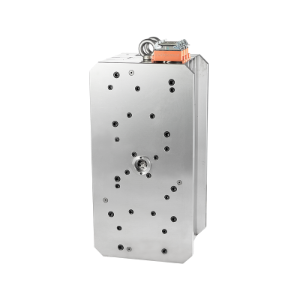 2025.11.07
2025.11.07
 News
News

1. Definition and Basic Function
1.1 What Is a Nylon Cable Tie Mold?
A nylon cable tie mold is a metal tool, often made from high-grade steel, used in injection molding machines to produce cable ties. The mold contains cavities in the shape of the desired cable tie, including the strap, locking head, and ridged surface. When heated nylon resin is injected into the mold under pressure, it takes the form of the cavity, producing a finished cable tie after cooling.
1.2 Core Purpose
The primary purpose of the mold is to ensure consistent dimensions, strength, and flexibility of the cable ties. Variations in mold precision can affect the tie’s ability to hold cables securely, its tensile strength, and its ease of use. For instance, in electrical installations where tight and reliable bundling is essential, even minor inaccuracies in the mold can product failure.
2. Design Considerations
2.1 Cavity Structure
The cavity structure determines the size and shape of the cable tie. A standard design includes a long strap with evenly spaced ridges and a locking head at one end. Some molds allow for customized designs, such as longer ties for industrial use or colored ties for identification purposes. A mold with multiple cavities can produce several ties per injection cycle, improving efficiency in mass production.
2.2 Material Selection
High-grade stainless steel or tool steel is typically used for molds due to their resistance to wear, heat, and corrosion. Nylon is injected at high temperatures, and a mold must withstand repeated thermal cycles without deformation. Poor material selection can result in premature wear, cavity damage, or inconsistent tie dimensions, especially in factories producing millions of ties annually.
2.3 Cooling and Ejection Systems
Molds are equipped with cooling channels to quickly solidify nylon after injection. Uniform cooling prevents warping or shrinkage, which can compromise the tie’s performance. Ejection pins are used to remove finished ties without damage. Well-designed cooling and ejection systems are essential for maintaining consistent quality in large-scale production.
3. Manufacturing Process
3.1 Injection Molding
The manufacturing process begins with melting nylon resin, which is then injected into the mold under pressure. After filling the cavities, the material cools and hardens, forming precise cable tie shapes. The cycle time depends on the mold design, resin type, and tie size. Factories producing industrial cable ties may complete thousands of cycles per day.
3.2 Post-Processing
After ejection, cable ties are trimmed, inspected, and sometimes treated for specific properties, such as UV resistance. This step ensures that the ties meet strength requirements and aesthetic standards. Real-world examples include cable management in server rooms, where ties must resist prolonged stress without deforming.
4. Applications and Real-Life Use
4.1 Electrical and Industrial Use
Nylon cable ties are essential in electrical wiring, automotive assembly, and industrial machinery. The mold’s precision directly affects performance in these applications. For example, in automobile manufacturing, ties must secure wiring harnesses in tight spaces without risk of snapping or loosening.
4.2 Household and Commercial Use
In homes and offices, cable ties organize computer cables, household wiring, and other small items. Molds for consumer-grade ties may prioritize cost-efficiency and ease of use, producing ties that are flexible and simple to fasten.
4.3 Specialized Cable Ties
Some molds produce heavy-duty or colored cable ties for specific applications. For instance, outdoor installations require UV-resistant ties, while industrial environments may require extra-strength ties for securing equipment. Customized molds enable manufacturers to meet these varied requirements efficiently.
5. Maintenance and Longevity
5.1 Mold Care
Regular maintenance of molds is essential to preserve precision. Cleaning cavities, lubricating moving parts, and monitoring for wear prolong mold life. In high-volume factories, preventive maintenance prevents costly downtime.
5.2 Replacement and Upgrades
Over time, molds may need replacement due to wear or changing production needs. Upgrading molds allows manufacturers to produce ties with new designs, longer lengths, or different tensile strengths. For example, a factory expanding from standard ties to heavy-duty industrial ties would require mold adjustments or new molds.